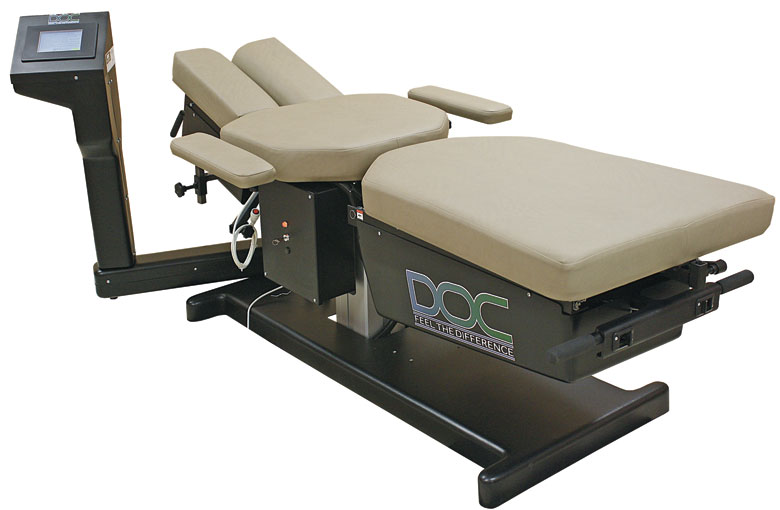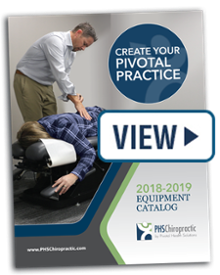This blog was curated from an article in Dynamic Chiropractic published on July 1, 2018, Vol. 36, Issue 07. The author of the original article is Marc Heller, DC. The original article can be viewed here.
When I read the chart notes of other chiropractors, I am usually disappointed. They list what vertebrae are fixated or misaligned. They may describe the involved fascia and muscles. In diagnosis, I see terms such as lumbar or pelvic dysfunction, lumbar or pelvic strain or sprain, etc.
 via Shutterstock via Shutterstock |
What's wrong? The diagnosis is incomplete. Far too many patients end up in the vague category of nonspecific lower back pain. It is no wonder research results are equivocal. Some of us tend to think in terms of correcting the subluxation. Some of us think primarily in terms of rehab. Some of us are focused on releasing the tight fascia and muscles with soft-tissue techniques.
A Different Model
I would like to propose a different model. I want to attempt to identify the pain generators and create a map of the pattern or syndrome that is causing that person's pain. This needs to be broad, and must include the fixation, rehab strategies, and the involved soft tissue. Yes, each patient is unique, and every part of your strategy will need fine tuning for the individual patient. (This model is inspired by Don Murphy, DC.1)
In any recurrent or longer-lasting pain, it is essential to get the whole picture. Our job is to help the patient manage and hopefully correct the problem, not just adjust the subluxation or release the muscles. P.S.: The subluxation correction will not hold and the tight muscles will recur if you do not address the underlying patterns.
Three Commonly Missed Syndromes
Here is my take on the most common (and most missed) syndromes. You may notice that none of these are really properly identified in ICD-10. It is too bad that functional conditions are ignored in our diagnostic systems. I add a statement to my assessment part of SOAP notes to give my overall impression.
1. The flexion-intolerant lower back, aka axial discogenic pain. This is so common, and yet commonly missed. Think of the patients who hurt themselves bending or lifting, or even hurt when sitting. The classic disc signs are usually equivocal or absent in axial discogenic pain. Trying to adjust the inflamed disc is generally useless or harmful. Extension and decompression are the most valuable pain-relief tools. There really is not a typical subluxation. (If this concept is unfamiliar to you, may I suggest Stu McGill's work, or Phillip Snell's Fix Your Own Back.)
DOC Decompression Table |
2. Maigne's syndrome, or irritated peripheral sensory nerves with thoracolumbar dysfunction. This is another very common and poorly understood syndrome. It can cause pain in the lumbar spine, in the flank, or in the buttock or lateral thigh.
Lyftogh has expanded our understanding of which nerves can be affected here. The peripheral sensory nerves, the cluneal complex, including superior cluneal, T10-11 nerves, ilio-hypogastric, ilio-inguinal, and/or lateral femoral cutaneous nerves can all be involved. There is almost always facet joint dysfunction at T10 through L3.
Typically, but not always, the patient will have pain on extension, or oblique extension. This is often misdiagnosed as SI pain, as the pain is usually unilateral and the tender points are just lateral to (but not at) the SI joints.
The patient often says, "I have sciatica." The pain rarely goes below the knee, and it usually will be somewhat more lateral than typical sciatica, going into the posterior lateral thigh. Straight-leg raise and neurological exams are normal. I find that many patients with buttock and posterolateral thigh pain have a combination of Maigne's syndrome and dysfunctional hips. P.S.: You have to treat the spine and the nerves.
3. Hips that lack mobility and are stuck forward. Rehab systems talk about increasing hip mobility, but this is a substantially different take. I like to call this functional hip impingement, but the term is not well-known.
Hip motion is so basic and important. Opening the hips (exercises into external hip rotation) is contraindicated in these patients. Basically, as Shirley Sahrmann outlined long ago, the femur gets stuck forward. Findings include a lack of hip internal rotation, often accompanied by restricted hip flexion and/or external rotation. The anterior femoral head will be tender and feel stiff, and manual muscle testing will often find an inhibited hip flexor, especially when tested at 30 degrees of flexion.
When the patient complains of groin or lateral hip pain, this may be the primary problem. More often, the hip is minimally symptomatic, but keeps the whole lower spine and legs from working properly, creating compensatory excessive mobility at the SI or lumbar disc areas and throwing off knee mechanics.4
The Overdiagnosed SacroIliac
This is a fourth syndrome, but the SI is really not so much missed as it is commonly overdiagnosed. Manual practitioners, including DCs, DOs and PTs, seem to think that sacroiliac (SI) misalignment implies sacroiliac pain. That is just not the case, according to Laslett.5 If the patient has true sacroiliac pain, they will have three of five positive SI provocation tests.
For true SI pain, think of patients, female more than male, who start with somewhat hypermobile ligaments or have had significant trauma. At a minimum, on palpation they will have very tender SI or sacrotuberous ligaments. My belief is that the SI becomes overly mobile to compensate for the three syndromes outlined above. Correct these and the pelvis often realigns itself.
Don't Forget...
This list of syndromes is not meant to be complete. Consider the lower lumbar facets. In older patients, consider spinal stenosis. A sedentary lifestyle with deconditioning reinforces any low back pain. Don't forget to rule out red flags. Up to 3 percent of your lower back patients have a significant medical pathology.
Are you the best diagnostician for lower back patients? You should be. Our training, and our opportunity to treat and reassess, make us the best qualified ... but only if we pay attention and look at the big picture.
References
- Murphy D. Clinical Reasoning in Spine Pain. Volume I: Primary Management of Low Back Disorders Using the CRISP Protocols. Self-published, 2013.
- Heller M. Link to articles in Dynamic Chiropractic (look at the Thoraco-Lumbar tab): http://sosas.us/professional-resources/articles-2/. Read this one first: www.dynamicchiropractic.com/mpacms/dc/article.php?id=57683.
- Dermal Traction Method, formerly known as Yank Away Pain. An approach focusing on irritated peripheral nerves.
- Heller M. "Functional Hip Impingement (Part 1): Evaluation, Hip Sparing and Mobilization." Dynamic Chiropractic, April 15, 2015.
- Laslett M. Evidence-based diagnosis and treatment of the painful sacroiliac joint. J Man Manip Therapy, 2008;16(3):142-152. (NOTE: I found this article very upsetting at first, as he discounts SI manipulation as useless. Read with an open mind and get the big picture.)



